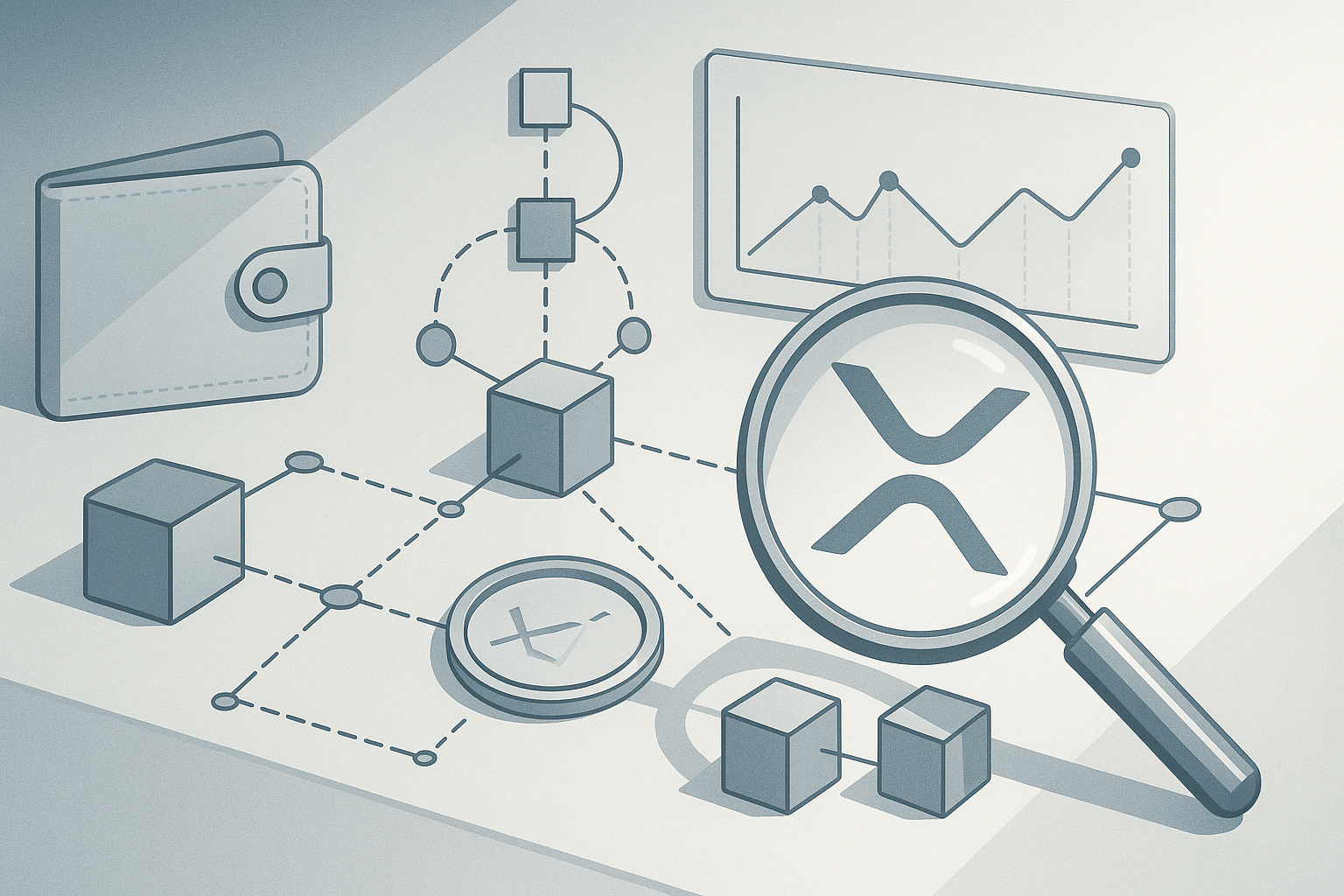XRP on Flare landed recently, marking a novel connection between a long-standing token and a smart-contract platform. The development draws attention because it changes how XRP can move through decentralized finance applications and how traders and holders may access liquidity.
Become a Doc: Profile Ethereum wallets and discover their behavior.
Use WalletAutopsy.
What the Flare listing means for XRP
Flare integration introduces the potential for XRP to be represented inside smart contracts and DeFi protocols that Flare supports. That capability matters because XRP has historically had limited on-chain programmability compared with tokens native to EVM-compatible environments. With a bridge or wrapped representation on Flare, decentralized applications on that network can accept the token as collateral, liquidity and settlement medium.
Yahoo Finance reported the listing, noting the technical availability on Flare and the intention to route XRP through the network's token standards. Observers framed the move as a bid to increase token utility rather than an immediate guarantee of higher prices. The market will watch transaction volumes, total value locked and user activity to judge how meaningful the change becomes.
DeFi access and practical implications
DeFi flows can change token demand profiles. When a recognizable token becomes usable inside lending markets, automated market makers, or yield strategies, it gains new use cases beyond trading. That can lead to longer-term custody of the token inside protocols, which reduces available circulating supply for spot markets while on-chain positions remain open.
Bridging mechanics will determine risk and utility. A trust-minimized bridge or a wrapped token supported by audited smart contracts tends to attract more institutional and retail participation than custodial or unsecured arrangements. Analysts will focus on the type of bridge implemented on Flare, the security audits performed and the pace at which liquidity providers enter new pools.
On-chain signals to watch in October
Volume and flow metrics matter immediately. If substantial amounts of XRP move into Flare-based contracts and remain there, that movement will show up on-chain and in crypto analytics tools. Sustained increases in on-chain holdings inside DeFi protocols suggest a structural change in how holders use the token.
Liquidity in pools serves as a leading indicator. Markets will look for depth in trading pairs that include XRP on Flare, especially across automated market makers. Thin liquidity generates price whipsaws; deeper pools absorb larger trades without dramatic price moves. The presence of stablecoin pairs also matters because they enable borrowing, lending and yield generation using XRP as collateral.
Custody, wallets and user experience
Crypto wallets that add Flare support will shape user adoption. Wallets that simplify the process of bridging, approving smart-contract interactions and tracking positions reduce friction for newcomers. Conversely, a fragmented wallet experience can slow adoption, leaving potential DeFi users on the sidelines until tooling improves.
Security and usability go hand in hand. Users tend to deposit tokens into DeFi when they trust the protocols and can easily manage approvals and keys. Clear instructions and reputable wallet integrations will make it easier for mainstream users to try Flare-based services with XRP, increasing the chance that adoption affects market dynamics.
Risks tied to new protocol access
Smart-contract risk is unavoidable when a token moves into DeFi. Bugs, flawed economic design or governance failures in Flare protocols could lead to losses for participants. Market participants will weigh potential yield against these risks before committing significant capital.
Bridge counterparty risk also matters. If the mechanism that brings XRP onto Flare relies on centralized custody for the underlying asset, that custody introduces a point of failure. Observers who follow the token's on-chain footprint will likely prioritize trust-minimized solutions where possible.
How analysts will assess price impact
Short-term reaction often reflects speculation and headlines more than sustained use. A listing can prompt immediate trading interest, but lasting price support depends on whether tokens stay locked in productive DeFi positions. Analysts quoted in reports have framed the question around measurable activity rather than announcements alone.
Medium-term indicators will include total value locked, active addresses engaging with Flare contracts and the balance between inbound and outbound bridged XRP. Crypto analytics platforms will track these metrics, and shifts in those numbers will give clearer signals about changing demand.
What traders and holders should monitor
Activity trends across Flare's contracts will be the clearest sign of adoption. Increasing deposits and a diversification of use cases—such as lending, liquidity provision and synthetic instruments—would indicate that the token is being used for more than speculation.
Market health must also be considered. Even with higher on-chain activity, macro factors, regulatory developments and broader crypto market sentiment can override local improvements. Traders should view Flare integration as one variable among many that affect price.
Conclusion
Practical impact depends on measurable adoption. The Flare listing opens doors for XRP to participate in DeFi, but the price implications in October will hinge on whether users and liquidity providers take advantage of those doors. Watching on-chain metrics and user flows provides the best evidence for whether this technical access translates into sustained demand.
Reporting note: Yahoo Finance covered the listing and relayed views from market observers; this piece focuses on the technical and market mechanics that will determine whether the listing influences price. Observers who track on-chain signals and the evolution of wallets and bridges should find the coming weeks informative as activity unfolds.
